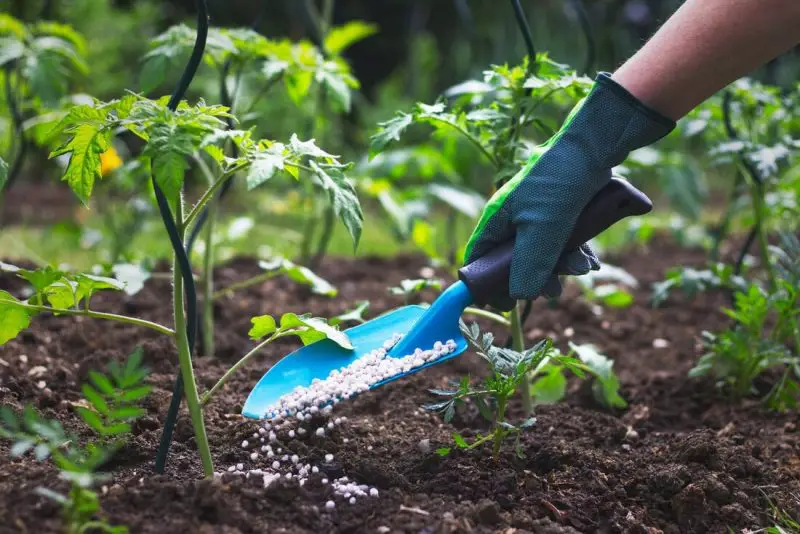Fertilizers play a critical role in plant growth and soil health, and one of the most commonly recommended formulas is the 15-5-10 fertilizer. Gardeners, landscapers, and farmers frequently turn to this balanced nutrient blend to achieve lush lawns, healthy vegetables, and flowering plants. Understanding what 15-5-10 fertilizer is used for and why plants respond so well to it is essential for anyone who wants to maximize their garden or lawn’s potential.
This comprehensive guide explores the fertilizer’s nutrient composition, its benefits for different plants, and best practices for using it effectively.
Table of Contents
Understanding the 15-5-10 Fertilizer Composition

The numbers in the 15-5-10 fertilizer represent the percentages of nitrogen, phosphorus, and potassium in the formula. These three macronutrients, often abbreviated as N-P-K, are the foundation of plant nutrition. Nitrogen makes up 15%, phosphorus 5%, and potassium 10% of the blend. Each nutrient plays a unique and essential role in plant health, and the balance provided by this formula is suitable for a wide range of applications.
Nitrogen is crucial for leafy growth and vibrant green color. It is a key component of chlorophyll, the molecule plants use for photosynthesis. Phosphorus supports root development, flower and fruit production, and energy transfer within the plant. Potassium enhances overall plant strength, improves drought resistance, and helps regulate water uptake, making plants more resilient to stress. Together, this nutrient ratio supports balanced growth, providing the foundation for healthy and productive plants.
Why Plants Respond So Well to 15-5-10 Fertilizer
Plants thrive on 15-5-10 fertilizer because it delivers a combination of nutrients that meets multiple growth needs simultaneously. The relatively high nitrogen content fuels rapid leaf and stem growth, which is especially beneficial during the early stages of development. This is why lawns, which rely on dense leaf growth, respond particularly well to this formula.
The inclusion of phosphorus, though lower than nitrogen, is vital for establishing strong root systems. A solid root structure ensures that plants can absorb water and nutrients more efficiently. Additionally, phosphorus plays an important role in stimulating flower and fruit production, making the fertilizer suitable for flowering plants and fruiting vegetables.
Potassium, the third major nutrient in the blend, strengthens plant tissues, making them more tolerant to heat, drought, and certain diseases. Its presence in the fertilizer ensures that plants are not only growing quickly but are also healthy and capable of withstanding environmental stress.
Ideal Applications of 15-5-10 Fertilizer in Gardening
The versatility of 15-5-10 fertilizer makes it a favorite among gardeners and landscapers. It is frequently used on lawns to promote thick, lush grass with a vibrant green appearance. The nitrogen encourages vigorous top growth, while potassium strengthens the grass, improving its resistance to foot traffic and weather extremes.
Vegetable gardens also benefit from this balanced fertilizer. Crops such as tomatoes, peppers, and leafy greens respond well to the nitrogen boost during their vegetative growth stage, while the phosphorus encourages strong root systems and supports fruit and flower formation. Because the formula is not excessively high in phosphorus, it helps prevent nutrient imbalances that could hinder growth in certain soil types.
Flowering plants and ornamentals also thrive when provided with 15-5-10 fertilizer. The combination of nitrogen for foliage, phosphorus for blooms, and potassium for overall vigor ensures continuous flowering and healthy, resilient plants throughout the growing season.
Timing and Frequency for Best Results
Applying 15-5-10 fertilizer at the right time is critical to achieving the best results. For lawns, early spring is ideal for encouraging rapid green-up and new growth. A second application during late summer or early fall helps strengthen grass before cooler weather sets in. In warmer climates, multiple light applications throughout the growing season can maintain consistent growth and color.
Vegetable gardens benefit most when fertilizer is applied before planting and then periodically during the growing season. This ensures plants have the nutrients they need for both vegetative and reproductive stages. Flowering plants and ornamentals should be fertilized at the beginning of their active growth cycle, with follow-up applications every four to six weeks during peak blooming periods.
Overfertilizing should be avoided, as too much nitrogen can cause excessive leafy growth at the expense of flowers or fruits. Following the recommended application rates ensures plants receive the nutrients they need without risking nutrient burn or environmental runoff.
How 15-5-10 Fertilizer Improves Soil Health
Beyond feeding plants directly, 15-5-10 fertilizer indirectly supports soil health by promoting strong root growth and healthy microbial activity. The phosphorus component encourages deep root systems, which improve soil structure over time. Healthy roots create channels in the soil, enhancing aeration and water infiltration.
Potassium helps balance osmotic pressure in plants, which indirectly benefits soil by preventing excessive nutrient leaching. While synthetic fertilizers do not add organic matter to soil, proper use of 15-5-10 encourages plant growth that contributes organic residues, which decompose and enrich soil structure in the long run.
Combining 15-5-10 fertilizer applications with organic soil amendments, such as compost or mulch, further enhances soil health, creating a sustainable growing environment.
Environmental Considerations When Using 15-5-10 Fertilizer
Responsible use of 15-5-10 fertilizer is important for maintaining environmental balance. Overuse or improper application can lead to nutrient runoff, contributing to water pollution in nearby streams and rivers. Following recommended application rates and avoiding fertilizing before heavy rains reduces the risk of leaching and runoff.
Using slow-release versions of 15-5-10 fertilizer can also minimize environmental impact by providing nutrients gradually, reducing the chance of sudden nutrient surges in the soil. Additionally, incorporating fertilizer into the soil rather than leaving it on the surface helps plants absorb nutrients more effectively, further reducing potential environmental harm.
Comparing 15-5-10 Fertilizer to Other Formulas
Gardeners often wonder how 15-5-10 fertilizer compares to other common formulas such as 10-10-10 or 20-10-10. The main difference lies in nutrient ratios. A 10-10-10 fertilizer provides equal amounts of nitrogen, phosphorus, and potassium, making it suitable for general-purpose use but less targeted for specific growth stages.
In contrast, 15-5-10 has a higher nitrogen content, making it particularly effective for promoting leafy growth and greening up lawns. Compared to 20-10-10, which has even higher nitrogen, 15-5-10 offers a more moderate approach that balances foliage growth with root and flower development, reducing the risk of excessive vegetative growth.
Choosing between these fertilizers depends on your specific gardening goals. For lush lawns and plants in their vegetative growth stage, 15-5-10 is often the ideal choice.
Tips for Maximizing the Effectiveness of 15-5-10 Fertilizer
To get the most out of 15-5-10 fertilizer, proper application techniques are essential. Even distribution across the soil surface ensures all plants receive adequate nutrients. Watering after application helps dissolve granules and allows nutrients to reach plant roots quickly.
Testing soil before applying fertilizer provides insight into existing nutrient levels, allowing you to adjust application rates accordingly. In soils already rich in phosphorus, for example, frequent use of phosphorus-heavy fertilizers may not be necessary. Adjusting your fertilization plan to match soil conditions ensures optimal results and prevents nutrient imbalances.
Combining fertilizer with other good gardening practices, such as mulching, regular watering, and pruning, further enhances plant health and growth.
Signs Your Plants Need 15-5-10 Fertilizer
Recognizing when plants need fertilizer helps you apply 15-5-10 at the right time. Yellowing leaves, slow growth, and poor flowering often indicate nutrient deficiencies that this formula can correct. Nitrogen deficiency causes pale, stunted leaves, phosphorus deficiency results in weak roots and delayed flowering, and potassium deficiency can lead to leaf scorching and poor stress tolerance.
Once you identify these signs, applying 15-5-10 fertilizer can quickly restore nutrient balance, promoting lush growth, healthy flowers, and strong plant structure.
FAQs about 15-5-10 Fertilizer
What does 15-5-10 mean in fertilizer?
The numbers represent the percentage of nitrogen, phosphorus, and potassium. This formula contains 15% nitrogen, 5% phosphorus, and 10% potassium, providing balanced nutrients for plant growth.
What is 15-5-10 fertilizer best used for?
It is ideal for lawns, vegetables, and flowering plants. The high nitrogen promotes leafy growth, phosphorus supports strong roots, and potassium improves plant health and stress resistance.
When should I apply 15-5-10 fertilizer?
For lawns, early spring and late summer are best. For vegetables and flowering plants, apply at the start of active growth and repeat every few weeks during the growing season.
Can 15-5-10 fertilizer be used on all plants?
Most plants benefit from it, but always test soil first. Plants requiring low nitrogen or specific nutrient ratios may need a different formula.
Is 15-5-10 fertilizer safe for the environment?
Yes, when used correctly. Avoid overapplication and fertilizing before heavy rain to prevent nutrient runoff. Slow-release versions are more environmentally friendly.
Final Thoughts on 15-5-10 Fertilizer and Plant Health
Understanding what 15-5-10 fertilizer is used for and why plants love it reveals why it remains a popular choice among gardeners. Its balanced combination of nitrogen, phosphorus, and potassium promotes rapid growth, vibrant leaves, strong roots, and resilient plants. Whether used on lawns, vegetables, or flowering ornamentals, it delivers consistent, reliable results when applied correctly.
By following proper timing, using recommended rates, and combining it with good soil management practices, you can ensure that your plants receive the nutrients they need to thrive. Healthy, nutrient-rich soil and well-fed plants not only create a beautiful garden but also contribute to a sustainable and productive growing environment.






